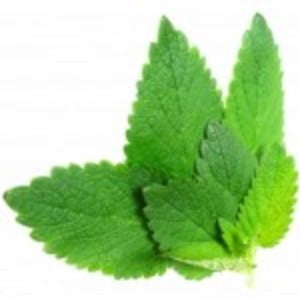It’s hard to imagine Italian food without Italian herbs and spices, yet in the middle ages Italian herbs were grown for medicinal purposes only. Primarily cultivated in small monastery gardens, it wasn’t until the Renaissance that an interest in herbs as culinary ingredients began to evolve.
Today, those same Italian herbs and spices are used in a variety of cuisines, but are mandatory when cooking Italian. The Italian pantry should be stocked with at least the basic ingredients if you plan on preparing traditional dishes. Each Italian herb is so unique in flavor, substitutions are near impossible.
Complex in flavor, Italian herbs can easily overpower a dish if not used in moderation. Combined, several herbs create a unique flavor unto their own. A true understanding of their characteristics is mandatory for creating a dish that is balanced in flavor. Armed with this knowledge, you’ll soon be creating an Italian feast that will match any from Naples.
Basil
Although the basil species offers several varieties, sweet basil is the most common type used in the Italian kitchen. It is used in just about all Italian recipes. Basil goes best with tomato-based sauces, salads, vegetable dishes, soups, and shellfish. Grind some up for a great tasting pesto. Basil adds great flavor to vinegar as well as extra virgin olive oil.
Borage
With a flavor similar to cucumber, borage is often used to add flavor to salads. Chopped, it is a great addition when sprinkled over soups, fish or chicken dishes. Minced leaves can be blended into yogurt and used as a sauce. In Tuscany, it is common to find the blue flowers spread on top of salads.
Fennel
Fennel has an aromatic flavor that is reminiscent of anise and licorice. The stems, leaves and seeds are used in Italian cooking. Fennel is used in salads, cabbage and bean dishes. It also goes well with fish and pork recipes. Fennel seed is a key ingredient in Italian sausage.
Marjoram
Marjoram is very similar to oregano in flavor, but is sweeter and a bit more mild. Its use is the same as that of oregano where flavor needs to be toned down. Marjoram is best used with more delicate dishes such as cheese and cream sauces, seafood or poultry.
Mint
Several varieties of mint exist, but peppermint is the most common in Italian cooking, especially in Tuscany where it is used in braised dishes and cream sauces. Mint is a key ingredient in many salads, fish and vegetable dishes. Mint is also used in some Italian liqueurs.
Oregano
Some will argue that basil is the most common Italian herb, while others will insist that oregano is the granddaddy. It really depends on the region of Italy that one is referring to. Oregano is common in most Italian recipes and is just about mandatory in any tomato-based sauce. Oregano has a powerful flavor and a little goes a long way. Oregano goes well sprinkled on most vegetables, meats and fish. Like basil, oregano flavors vinegar and olive oil quite well.
Parsley
Often regarded as only a garnish, Italian parsley is used to lighten the flavor of many dishes. Its clean and slightly sweet flavor tones the impact of basil and oregano when mixed in equal proportions. Fresh parsley is often used in salads while the dried leaves are used in soups, stews, vegetable dishes and with fish and poultry.
Rosemary
Rosemary has a sweet, wood flavor. Its versatility in Italian cooking is almost endless. Its primarily use is to flavor hearty meat dishes such as pork, lamb, rabbit and wild game. Rosemary is also used on egg dishes, vegetables, polenta and even breads such as focaccia.
Sage
More commonly known as a seasoning for poultry, the Italians use sage to flavor most roast meat or fish dishes as well as a key ingredient in wild game marinades. Sage also adds great flavor to salads, vegetable dishes and sauces. Roasted or fried sage leaves are often served as antipasti.
Thyme
With a slightly minty flavor, thyme is well suited as a flavoring for lamb, pork and wild game. It is also used in sauces, risotto and stews. A minimal amount sprinkled on salads or soups is a nice addition. Thyme is also an ingredient in Italian liqueurs.
Garlic
Although not an herb, garlic is a major contributor to Italian cuisine and should be mentioned when discussing Italian flavors. Technically a plant, garlic is a member of the Lilly family and is related to onions, chives and leeks. Used in almost all facets of Italian cooking, it’s readily available fresh, minced or in powder form. Typically, garlic is added according to personal taste.
The magic of Italian herbs and spices is how they interact with one another. No one ingredient acts alone. Combined, they come together as one. Once the complexities of each is understood, achieving a particular flavor will become second nature.
Buon appetito!




